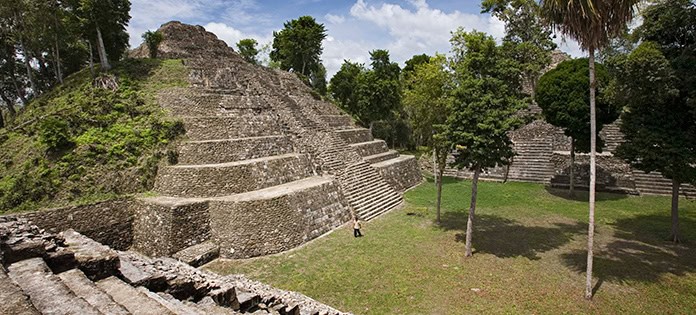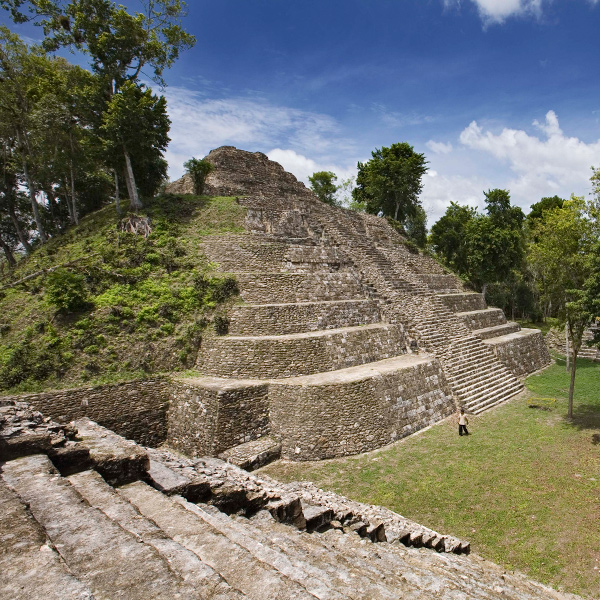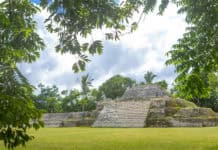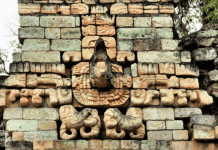Guatemala, El Salvador and Honduras are the cradle of the Mesoamerican civilization par excellence. In fact, these three countries make up what is known as the Mayan triangle, where nature and archaeology merge to offer the visitor colour, beauty and the mysticism typical of this pre-Columbian society. Are you drawn to Mayan history? I invite you to discover its most emblematic areas. Soak up its cultural richness in the most amazing multi-destination adventure of your life!

Where to see Mayan archaeology
Mayan archaeology illustrates the beliefs of this community about gods and the cosmos. In its remains lie representations of its lunar and solar calendars, as well as a third calendar based on Venus. You’ll be interested to know that the lunar calendar is currently used in some parts of Guatemala. You’ll see these representations in various archaeological complexes of this triangle, but also others which refer to rites designed to pay homage to the gods (sacrifices) or centred on agriculture, with corn as the protagonist.
Mayan history in Guatemala
This last example also concerns Guatemala, which boasts some of the oldest Mayan places. The most spectacular is Tikal in Petén, located in the heart of the tropical jungle and declared a World Heritage Site. This site, which dates back to the 4th century BC, was one of the largest Mayan urban centres, and in its more than 16 km2 of structures, the Temple of the Great Jaguar and the Plaza of the Seven Temples, which has a triple area for the ball game, stand out. I haven’t forgotten the highest temple, the temple of the Double-headed Serpent (17 meters), where the sun was observed.
When we talk about Tikal, we cannot fail to mention its allied city, Yaxhá, as it also features some buildings from the Classic period. Don’t miss the 72-metre Great Pyramid of La Danta in El Mirador, and the roads and hieroglyphic stairways of another nearby Mayan city, El Naranjo.
Mayan jewellery in El Salvador
Crossing the Guatemalan border, we reach another of the most important Mayan settlements. Tazumal and the site declared a World Heritage Site, Joya de Cerén, are located in El Salvador. In what is known as the Pompeii of America (it was buried by volcanic lava from Ilopango in 600) you’ll discover what Mayan life was like from the year 400.
Its bedrooms, cellars and kitchen areas with pots, clay objects and grinding stones are revealed among those structures where political meetings or craft workshops took place. If you want more mystery, I recommend that you visit Chihuatán, the largest archaeological site in El Salvador. Pay attention to what was the central market.
Mayan sites in Honduras
I can’t leave the ruins of Copán off the list, a World Heritage Site and arguably the Mayan site which can offer you the most information about this civilization. Occupied between the 5th and 9th centuries, it’s also one of the most important sites in the world in relation to the Mayans, and it’s located in the heart of the Honduran jungle. The most relevant events which happened here are embodied in the famous Hieroglyphic Stairway, which also reveals the twelve kings in what stands as the longest inscription of this civilization. The Great Plaza and Altar Q are other strategic points.
Río Amarillo is located close to Copán and here you’ll see 53 structures. It’s the place which demonstrates the fall of the Mayan Empire, as many buildings are unfinished.
Feel that you’re travelling to the most fascinating past of Central America by entering the Mayan triangle. Visit our website to make a note of more details about this popular multi-destination tour.






